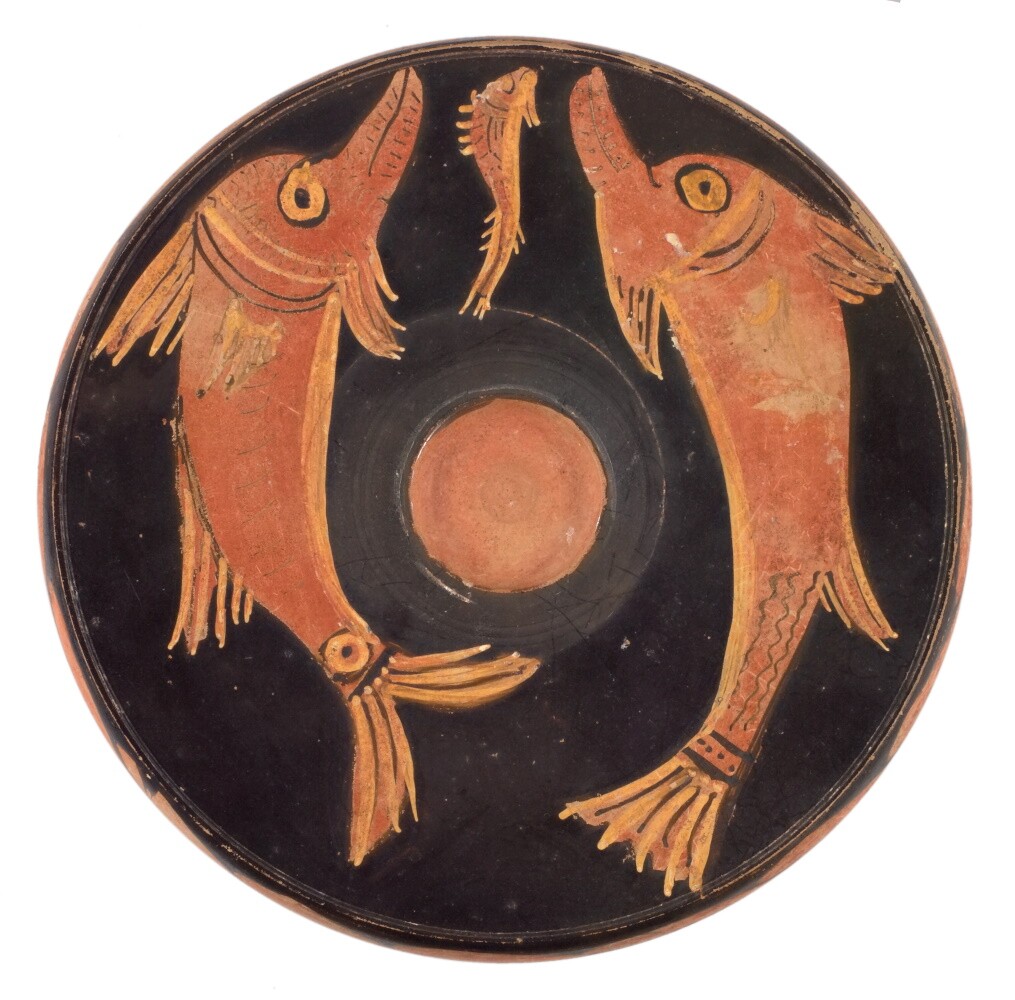The so-called 'fish plates' are a ceramic vessel type of the late 5th and 4th century BC, mainly from Lower Italy, which is characterised by a conspicuous hanging rim and a central depression. They are decorated with all kinds of marine animals closely based on the natural model. This particular type of pottery was an extremely popular vessel for almost three generations, i.e. between 390 and 300 BC.
The principle of fish plate iconography is completeness. The subject of the individual plate is an excerpt from the marine fauna, delineated in alternating representations, which taken together seems to represent the totality of all marine fish of the Mediterranean: bream, octopus, perch, dorado, dolphin, but also the mythical sea creatures such as hippocampi and nereids are not missing.
The actual purpose of the plates has not been clearly clarified to this day; their destination and use seem ambiguous: the plates produced in the Greek colonies in the western Mediterranean were usually used as burial objects and not as tableware as in the mother country. This is evident in the choice of motifs. While in Athens the depiction of edible fish clarified the function of the fish plate, in the West the dolphin was often depicted. It stands for the symbol of life, while the sea was seen as the place where life was created. Thus, these two symbols point to the otherworldly world of death. The images of the sea animals become, as it were, a comforting message, an announcement of new life after death. (AVS)
de









